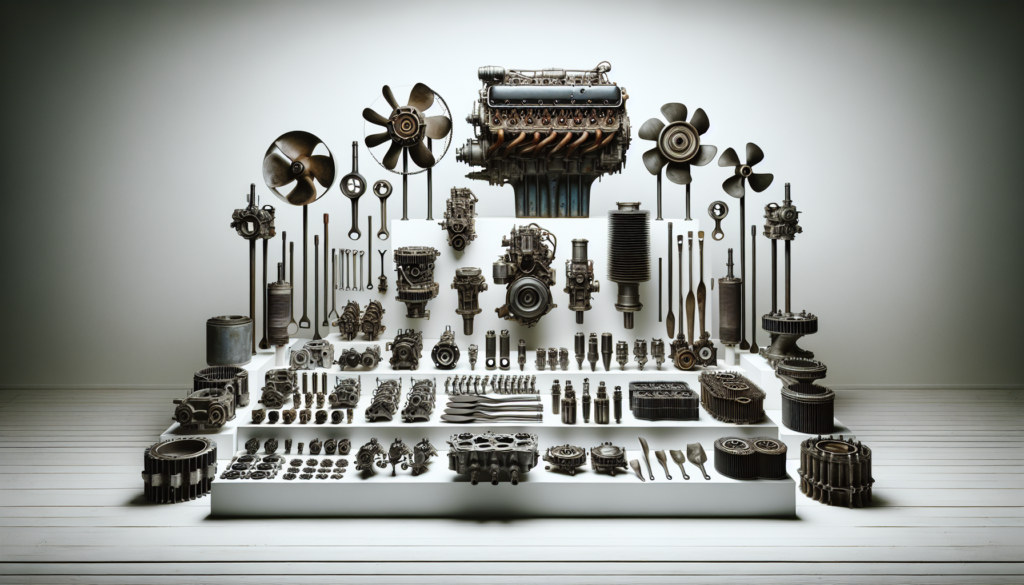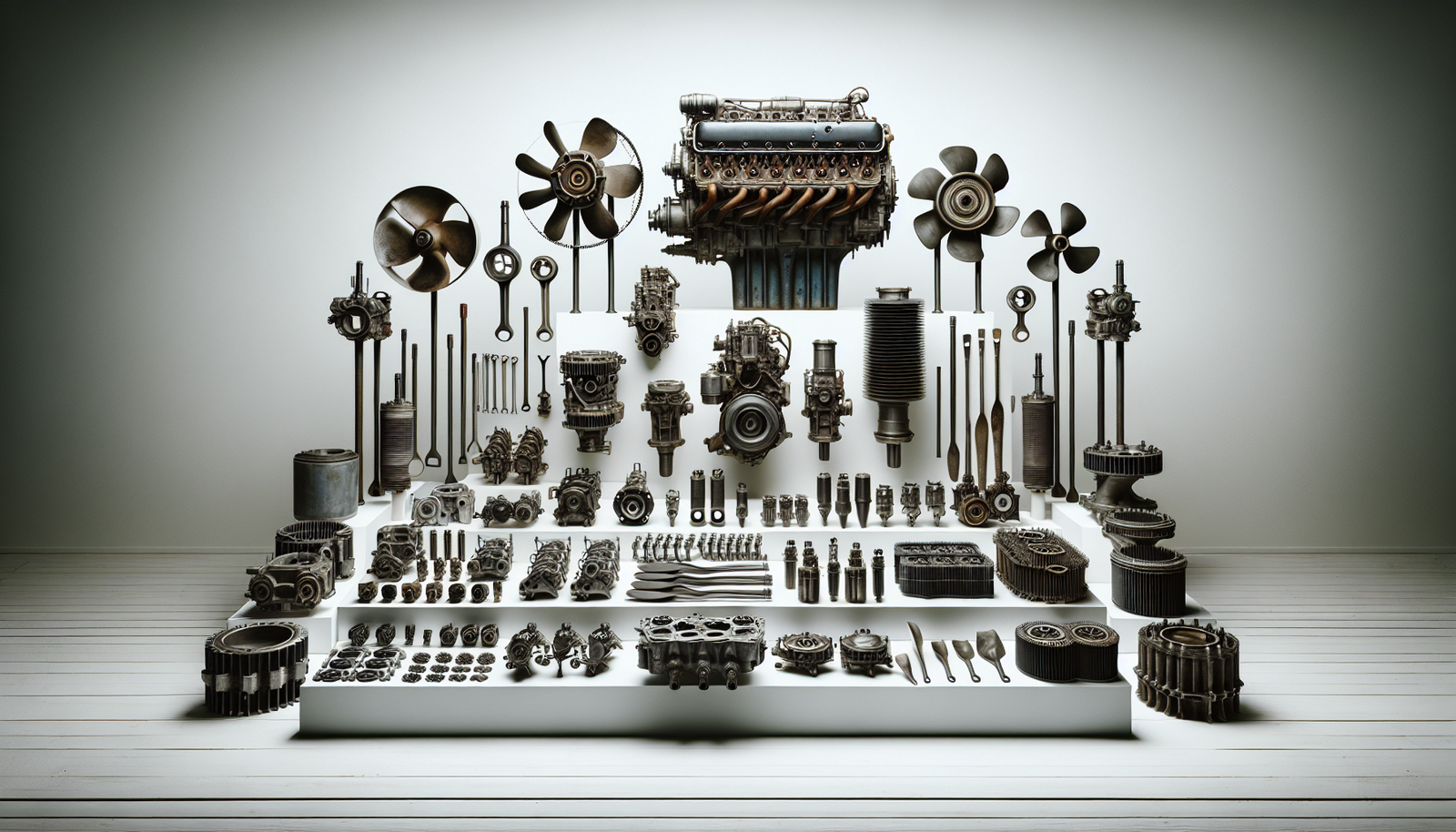Just imagine, you’ve spent countless hours on your treasured boat, riding the waves and enjoying the freshness of the sea. But now, your trustful boat engine has finally given out, leaving you pondering – what should you do with all of its old, worn-out parts? Fear no more, because in this handy guide, we’ll explore the essential steps on the correct disposal of old boat engine parts, ensuring that you contribute to saving the environment efficiently. We will help you navigate a process that is not only eco-friendly, but also conforming to local regulations. From understanding which parts can be salvaged or recycled to finding approved waste facilities or collectors near you, you’ll become a pro at parting ways with your old boat engine components in no time.

Understanding the Need for Proper Disposal
When you’re dealing with old boat engine parts, disposal can seem like a no-brainer. You may think that you just need to find a spot to toss it, but it’s not that simple. There’s a real need for the proper disposal of these materials, mainly due to the numerous potential environmental and legal implications involved.
Environmental Impacts of Improper Disposal
Improper disposal of boat engine parts can lead to serious environmental issues. For instance, engine parts can contain hazardous materials such as oil, fuel, and other fluids, which can contaminate both land and water resources. This contamination can in turn affect plants and animal life, disrupting entire ecosystems. Also, it’s not uncommon for bits of metal, plastic, and rubber from disposed engine parts to end up in the food chain when animals unintentionally consume these items.
Legal Implications of Improper Disposal
In addition to the environmental impacts, improper disposal can land you in legal trouble. Various environmental laws and regulations exist to protect our natural resources from pollution, including improperly disposed engine parts. Fines, penalties, and even prison time can be a result of violations. It’s crucial to familiarize yourself with the local, regional and federal laws regarding waste disposal to ensure you’re not inadvertently breaking the law.
Identifying the Boat Engine Parts to be Disposed
Before you start the disposal process, it’s important to identify the specific boat engine parts that need to be disposed of.
Major Boat Engine Parts
The main parts of a boat engine that often need disposal include the engine block, crankshaft, pistons, connecting rods, and camshaft among others. You might also deal with various smaller parts like bolts, screws, gaskets, and seals.
Identifying Hazardous Components
Hazardous components can contain harmful substances such as lead, mercury, and polychlorinated biphenyls (PCBs) which demand careful handling. Batteries, engine oil, brake fluid, and antifreeze are some of the most commonly encountered hazardous components. Identifying these hazardous parts is crucial in deciding how to proceed with your disposal process.
Preparatory Steps for Disposal
After identifying the items, a few preparatory steps are needed before disposing of the boat engine parts. These steps are important for ensuring the safe and efficient removal of the engine’s components.
Draining Fluids and Drying Parts
Start by draining any residual fluids from the engine parts. This includes things like oil, coolant, and any fuel that may be inside. Once emptied, let the parts dry to prevent any leaks during disposal.
Separating Hazardous and Non-Hazardous Parts
Divide your parts into two groups: hazardous and non-hazardous. This will facilitate easier and more efficient disposal, as hazardous materials require special consideration and cannot simply be thrown out with the regular trash.
Packaging Engine Parts for Disposal
Before these parts can be hauled off, they’ll need to be packed up. Depending on the size and weight of these parts, you may want to use sturdy, heavy-duty plastic bags, bins, or boxes to hold these items.
Disposing of Non-Hazardous Parts
Non-hazardous engine parts are generally easier to dispose of than hazardous ones.
Local Waste Disposal Options
Most non-hazardous parts can be disposed of in your regular garbage pickup, but larger parts might require a special pickup or a trip to your local dump or landfill.
Donating or Selling Old Parts
Old doesn’t always mean unusable. Your old engine parts might still be useful for someone else. You could consider selling or donating them to individuals or organizations who could benefit from them.
Recycling Old Parts
Several parts of an engine, such as the metal components, can be recycled. This doesn’t just reduce waste, it can also sometimes earn you a bit of cash.
Disposing of Hazardous Parts
Dealing with hazardous parts requires more care, but it’s an essential aspect of the disposal process.
Identifying Local Hazardous Waste Facilities
Certain facilities are designated to handle hazardous waste. These facilities have the knowledge, training, and equipment necessary to dispose of these materials safely. You should check local resources or do a quick internet search to find the nearest of these facilities.
Safety Guidelines for Handling Hazardous Parts
When handling hazardous parts, always wear personal protective equipment, like gloves and goggles, and avoid any direct skin contact.
Packaging Hazardous Parts for Disposal
Packaging for these parts should be sturdy and leak-proof, as spilling hazardous material could potentially be dangerous.
Recycling Options for Old Boat Engine Parts
Recycling is not only good for the environment, but it could also be a practical way to deal with old boat engine parts.
Understanding the Recycling Process
Most engines are composed largely of steel and aluminum, both of which can be recycled. It involves processing the metal parts to be used in the production of new materials.
Benefits of Recycling Old Parts
Recycling engine parts conserve resources and reduces the demand for raw material extraction. Additionally, it aids in reducing landfill volumes and can even generate some cash.
Finding Recyclers that Accept Boat Engine Parts
Not all recycling facilities accept all types of materials. Be sure to verify that your local recycler is equipped to handle and accept your old boat engine parts.
Hazards of Dumping Parts in Water Bodies
Though it might seem convenient, dumping old engine parts into bodies of water creates significant problems.
Environmental Impact on Aquatic Ecosystems
Such dumping can introduce damaging substances to the water, negatively impacting fish, plant life, and the overall water quality. This can disrupt the balance of the aquatic ecosystem, leading to severe long-term effects.
Legal Penalties for Dumping
Illegally discarding engine parts in bodies of water is likely to result in severe repercussions, including hefty fines and other penalties.
Professional Services for Disposing Boat Engine Parts
Disposing of old boat engine parts can be a complex process, and it’s not surprising if you feel overwhelmed. That’s where professional disposal services come in.
Finding Professional Disposal Services
Look for professional disposal services in your area that specialize in marine or automotive waste. These services have the necessary expertise and equipment to dispose of these parts safely and legally.
Cost of Professional Disposal
While hiring professionals could be more expensive, it may ultimately be worth it for the peace of mind it brings. Remember to factor in potential transport costs, labor, and other fees when considering this solution.
Understanding the Disposal Process of Professional Services
Professional disposal services use a variety of methods to dispose of boat engine parts, including disassembly, decontamination, and recycling. The specifics will vary, depending on the service provider and the type of waste involved.
Home-Based Solutions for Disposing Old Boat Engine Parts
If professional disposal seems too costly, you might consider handling the disposal yourself at home.
Pros of Home-based Solutions
Managing your own disposal process can save money, and it also allows more control over the process.
Cons of Home-based Solutions
However, it can be time-consuming, strenuous, and you still face the responsibility of complying with all relevant regulations. Disposing of hazardous materials in particular may pose a risk if not done correctly.
Safety Measures for Home-based Solutions
Always wear proper safety gear, handle hazardous materials with care, and adhere strictly to local disposal regulations.
Myths Surrounding Boat Part Disposal
There are several misconceptions about boat part disposal that can create confusion and can even lead to irresponsible disposal practices.
Common Misconceptions About Disposal Process
Some people might believe that it’s okay to simply throw away old engine parts, or that all parts are recyclable, or that disposing of parts in water bodies won’t harm the environment. These are all myths.
Importance of Responsible Disposal
It is vital to understand the importance of proper disposal to protect the environment and avoid legal problems.
Debunking Myths with Facts
Before disposing of old boat engine parts, educate yourself and understand the facts. Not all parts are just trash – many can be recycled or may even be hazardous waste. Dumping can harm the environment and lead to legal troubles. The truth is, responsible disposal plays a crucial role in preserving the environment for future generations.

